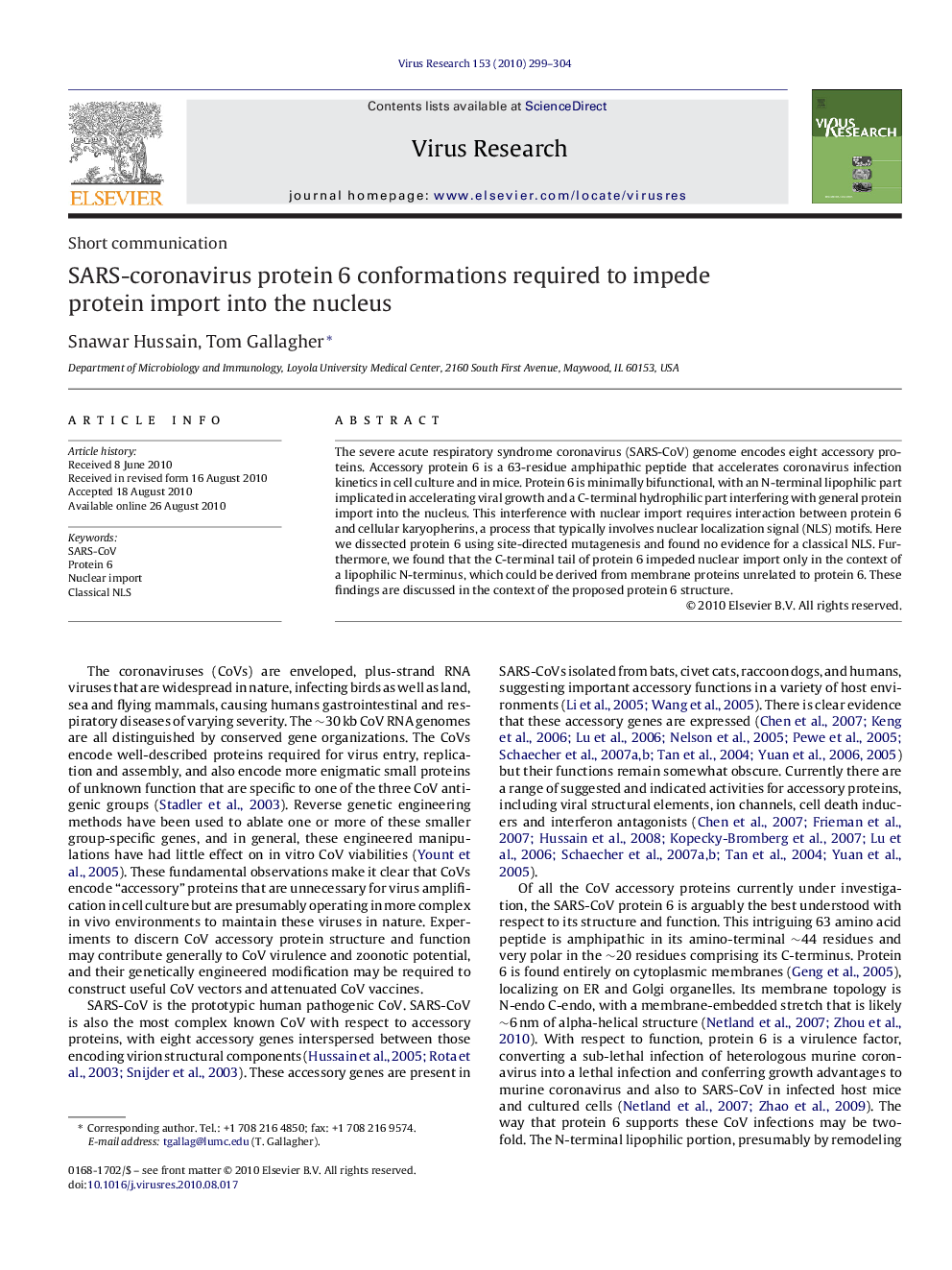| کد مقاله | کد نشریه | سال انتشار | مقاله انگلیسی | نسخه تمام متن |
|---|---|---|---|---|
| 3429259 | 1228242 | 2010 | 6 صفحه PDF | دانلود رایگان |

The severe acute respiratory syndrome coronavirus (SARS-CoV) genome encodes eight accessory proteins. Accessory protein 6 is a 63-residue amphipathic peptide that accelerates coronavirus infection kinetics in cell culture and in mice. Protein 6 is minimally bifunctional, with an N-terminal lipophilic part implicated in accelerating viral growth and a C-terminal hydrophilic part interfering with general protein import into the nucleus. This interference with nuclear import requires interaction between protein 6 and cellular karyopherins, a process that typically involves nuclear localization signal (NLS) motifs. Here we dissected protein 6 using site-directed mutagenesis and found no evidence for a classical NLS. Furthermore, we found that the C-terminal tail of protein 6 impeded nuclear import only in the context of a lipophilic N-terminus, which could be derived from membrane proteins unrelated to protein 6. These findings are discussed in the context of the proposed protein 6 structure.
Journal: Virus Research - Volume 153, Issue 2, November 2010, Pages 299–304